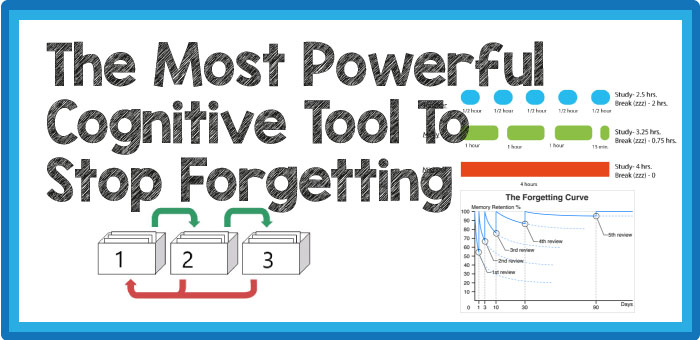
Stop studying too much. Stop studying everyday. Wait until just before you forget to review.
Easier said than done. Let’s look at a sample scenario.
You have four hours to study for an exam. Should you study straight through like Michael the over-achiever, or take a relaxed approach like Teacher? Somewhere in the middle like Molly?
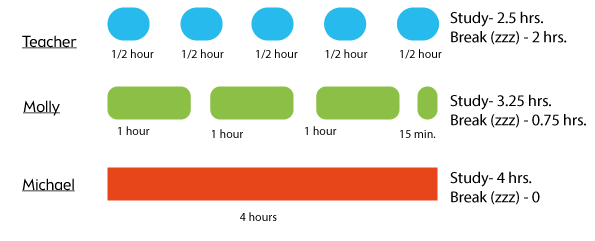
Studying like Teacher, for a half hour with half hour breaks in between, is the best strategy.
It doesn’t just work short term either and the effect is actually even more prominent of an effect long-term.
The Spacing Effect
In a nutshell: Space out the intervals between study sessions and remember (much) better.
Spaced repetition contrasts greatly with the more traditional massed repetition practice, which is just as it sounds. Doing a lot of reviews repetitively in a short amount of time.
In a study in the 2000s, participants using spaced repetition practice outperformed massed repetition participants in 259 out of 271 trials: 96% more effective as a study tool (Cepeda 2006).
So studying less means learning more. Seems counter-intuitive, but it doesn’t have to be.
Understanding the Spacing Effect: A Gym Analogy
Consider a weight-lifting analogy. When you work out a muscle/muscle group, you tire it. Then you go eat food, sleep, and rest, letting the muscle grow.
You introduce stress to the body. And let the body rest and recover, adapting itself to be just a little bit stronger than the last time.
But if you worked out the same muscle each day, you wouldn’t give the body enough time to rest. And so you wouldn’t grow.
Learning is the same. Learning something new isn’t easy, it takes work and causes real physiological stress. You need rest and recovery (time away) to recuperate and let the new fact be fully integrated.
Just like at the gym – where you can easily overwork the same muscle – you can easily overwork the same neurons!
So space out your reviews and let your neurons rest!
Where does the spacing effect come from? And what are the best practices of the spacing effect?
The Forgetting Curve
Discussion on the forgetting curve honestly could warrant its own post. Interested parties like myself geek out over this big time…
Basically, the learning curve is the amount of time it takes to learn something. Easy enough.
Therefore, the forgetting curve is the opposite: the amount of time it takes to forget something.
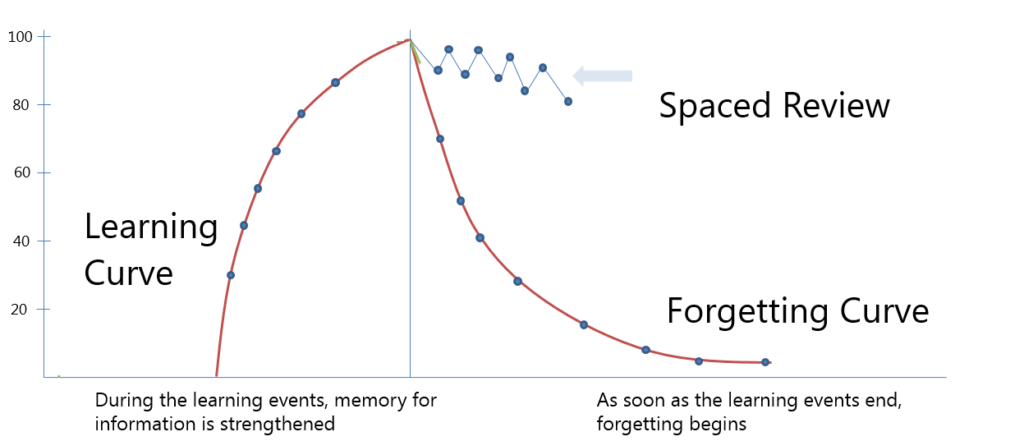
Learning curves come in all shapes and sizes, but what is truly amazing is that forgetting curves look predictably similar across age ranges and demographics. Humans forget at about the same rate universally.
The forgetting curve was first described by a German psychologist named Ebbinghaus in 1885. He memorized thousands of nonsensical patterns of syllables. And then tested himself using a metronome and millions of repetitions to measure the precise moment in which he forgot something learned.
The forgetting curve is exponential; memories are forgotten fast!
So how can we limit the forgetting curve, or at least make it less steep? Spacing our intervals!
Spaced Repetition and The Forgetting Curve
By spacing our reviews, what happens to the forgetting curve is truly astonishing: it increasingly levels out until a new memory can be considered in a state of ‘permastore’.
Each review flattens the forgetting curve meaning we get to wait even longer until we have to review again.
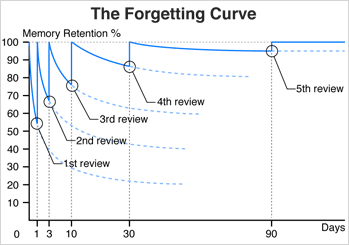
Best Practices to Flatten Your Forgetting Curve/Space Your Reviews
Initial Review Delay
Generally, an initial wait interval is suggested as 5-10% of when recall is needed.
If you have a test in 30 days, your first review should be in 1.5-3 days.
Granted, this depends on how well your initial learning session was. If you didn’t really learn it at first, you can’t really expect to still know it in a day or two.
Subsequent Review Delays
When should the next review be? Here is where it gets tricky…
Pimsleur has a sort of spaced interval built into its programs, and it is:
5 seconds, 25 seconds, 2 minutes, 10 minutes, 1 hour, 5 hours, 1 day, 5 days, 25 days, 4 months, and 2 years
But this is pretty arbitrary. The best method would be much more personal. You’ve got two basic options:
Paper or Electronic – The Best Methods for Spaced Review
Paper – The Leitner Method
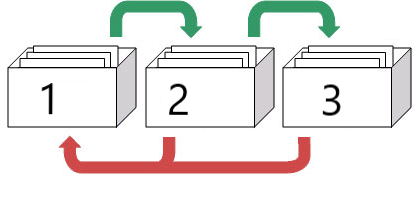
The Leitner Method is a paper-based system using flashcards in order to track your spaced review sessions. They can use anywhere from 3 boxes to as many as you want (Leitner himself utilized 7 boxes and a 64 day schedule with calendar…its intense).
With my students, I encourage a three box system. Its easy, spaces the material out enough, and once they want/need to get more complex a computer-based system becomes a better option anyway.
After learning the fact is learned, add the flash card to Box 1.
During review:
Box 1 – Everyday
If correct – Go to Box 2
If incorrect – Stay put
Box 2 – Every other day (or just Tuesday and Thursday)
If correct – Go to Box 3
If incorrect – Go to Box 1
Box 3 – Every third day (or just Friday)
If correct – Stay for 1 round, then graduate to a larger maintenance box or I hold onto them for the student
If incorrect – Go all the way back to Box 1
There are a few extra considerations I make with problem/extra difficult cards, ‘intermediate’/half-way cards, but these are personal and depend greatly on the individual learner.
Electronic – Spaced Repetition Software (SRS)
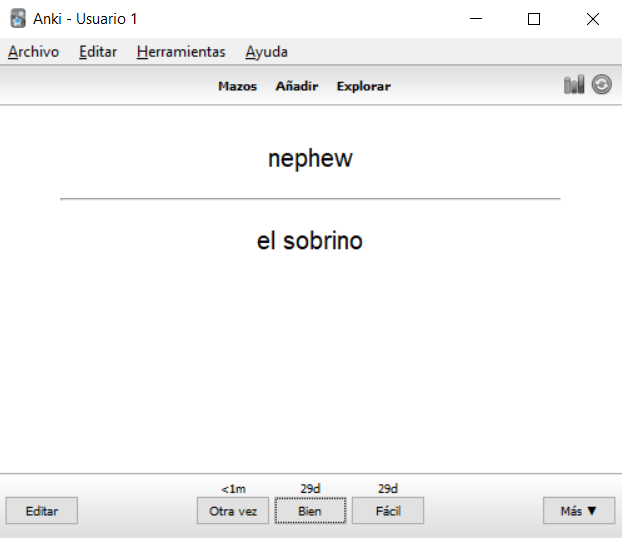
While I like paper-based systems to start off with normally – handwriting practice for younger students, a better personal connection to make the memory stick, as well as getting them used to the foreign concept of the spacing effect – there is no denying the true power of SRS.
The algorithm alone is worth the switch. By classifying your answers with Again/Easy/Good/Difficult, you get a much wider variety of time intervals than with just Correct/Incorrect with the Leitner Method.
Adding complex cards is a breeze. Not to mention how you can easily add mp3 files, images, formulas, quizzes, etc.
Take it anywhere. With mobile versions you can be in the line for the Louvre while doing your ‘repetitions’ (like I once did…).
I have cards in my deck that have time intervals on them of more than 3 years. Pretty much in ‘permastore’ at the moment, and something I could never have accomplished with a paper-based Leitner system, and certainly not without spacing my reviews!
Personally, I recommend all my students to use an application like Anki. Its free, has tons of support, and a huge community of plugin makers and advice givers.
Check it out and stop forgetting already!


Pingback: Replacing the Reading Log with an Input Log